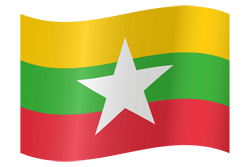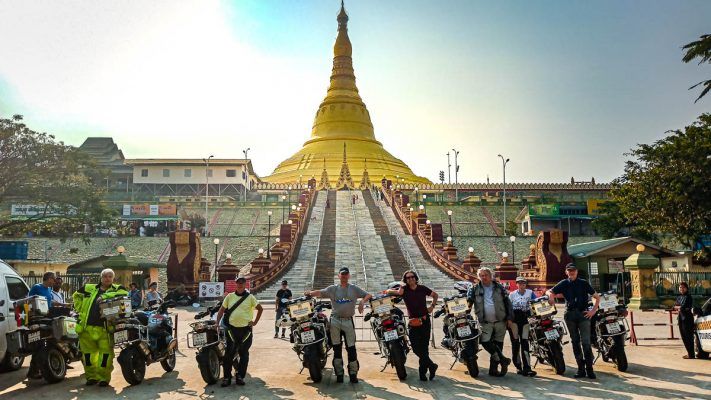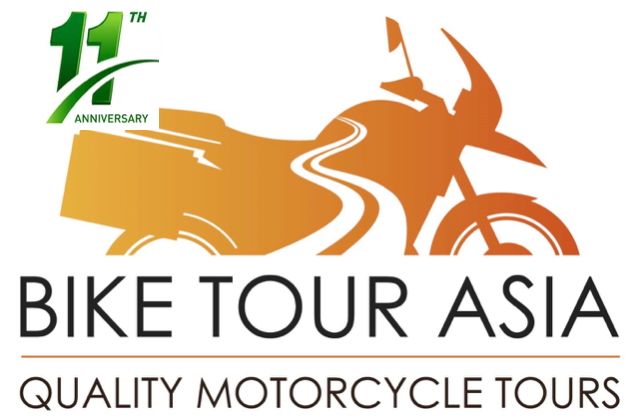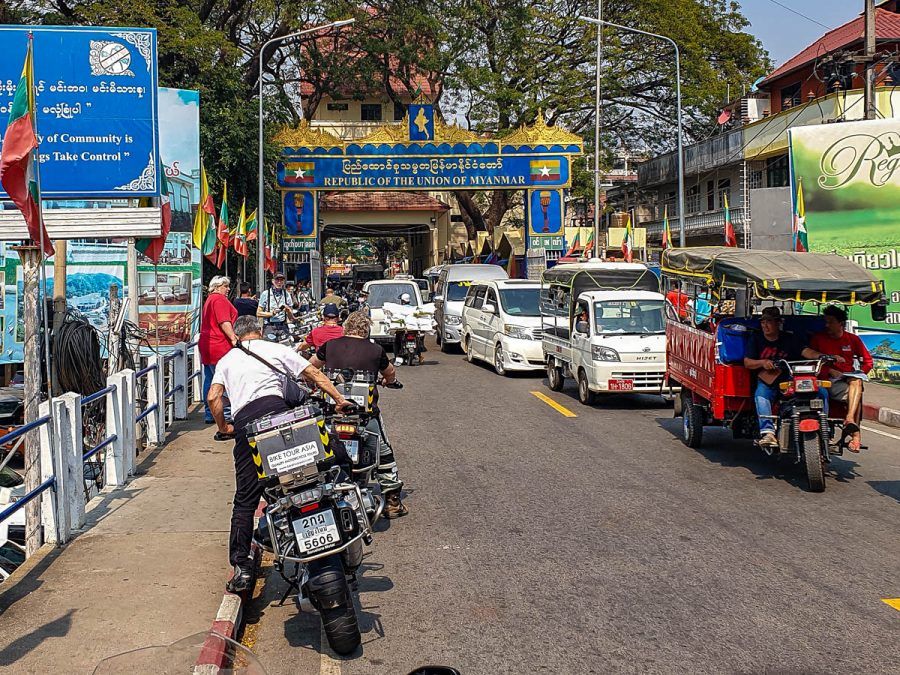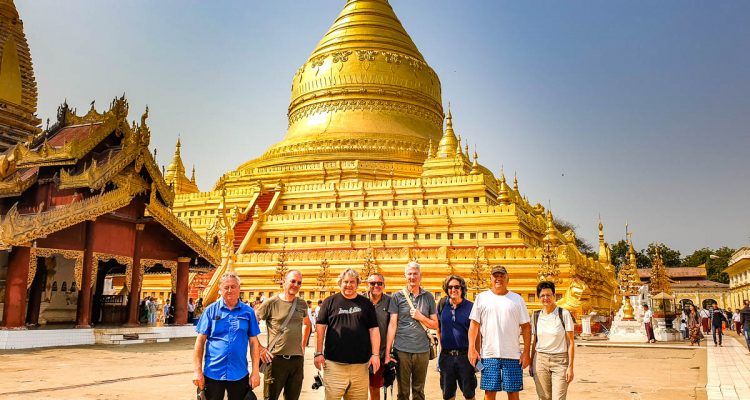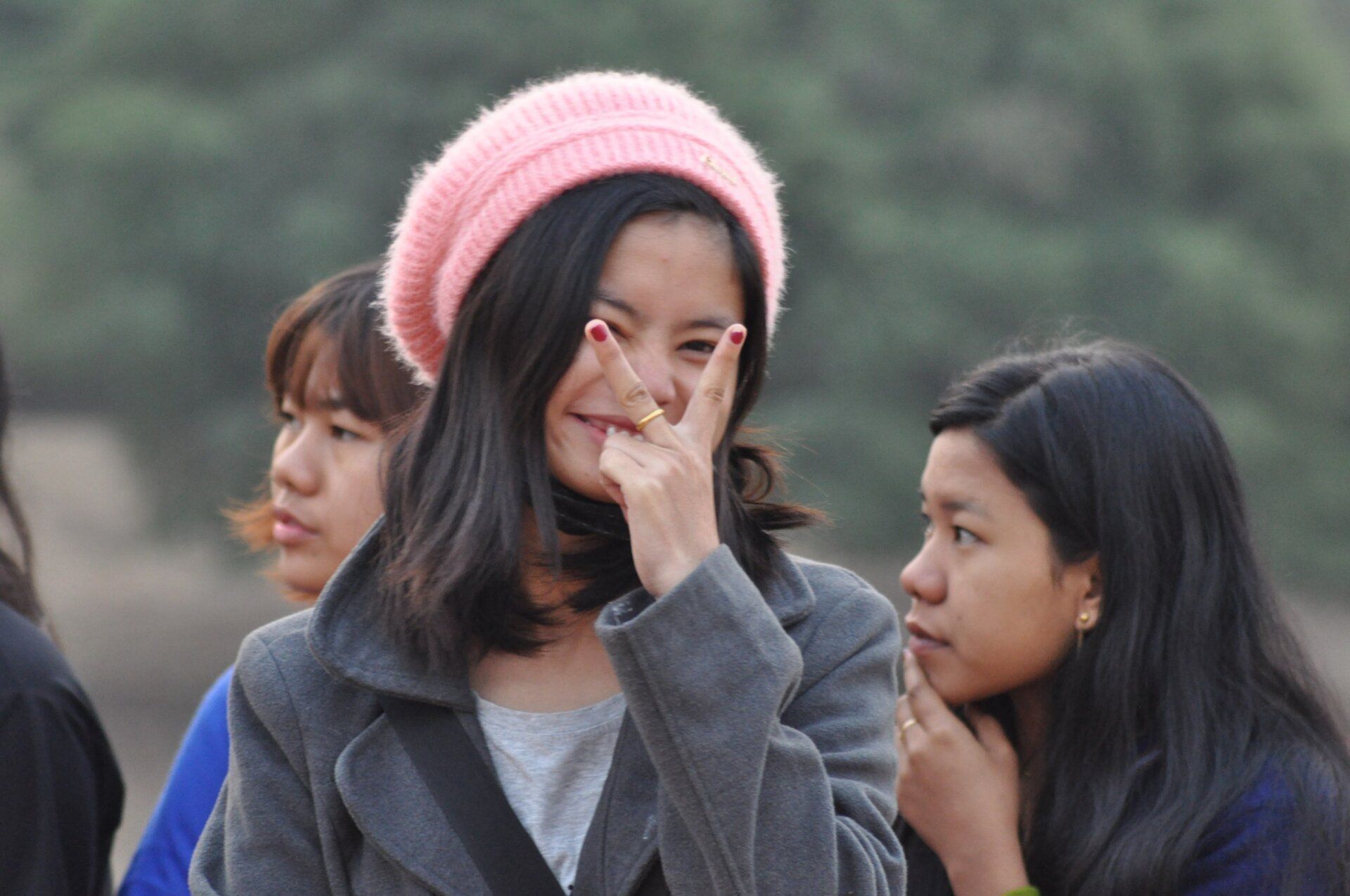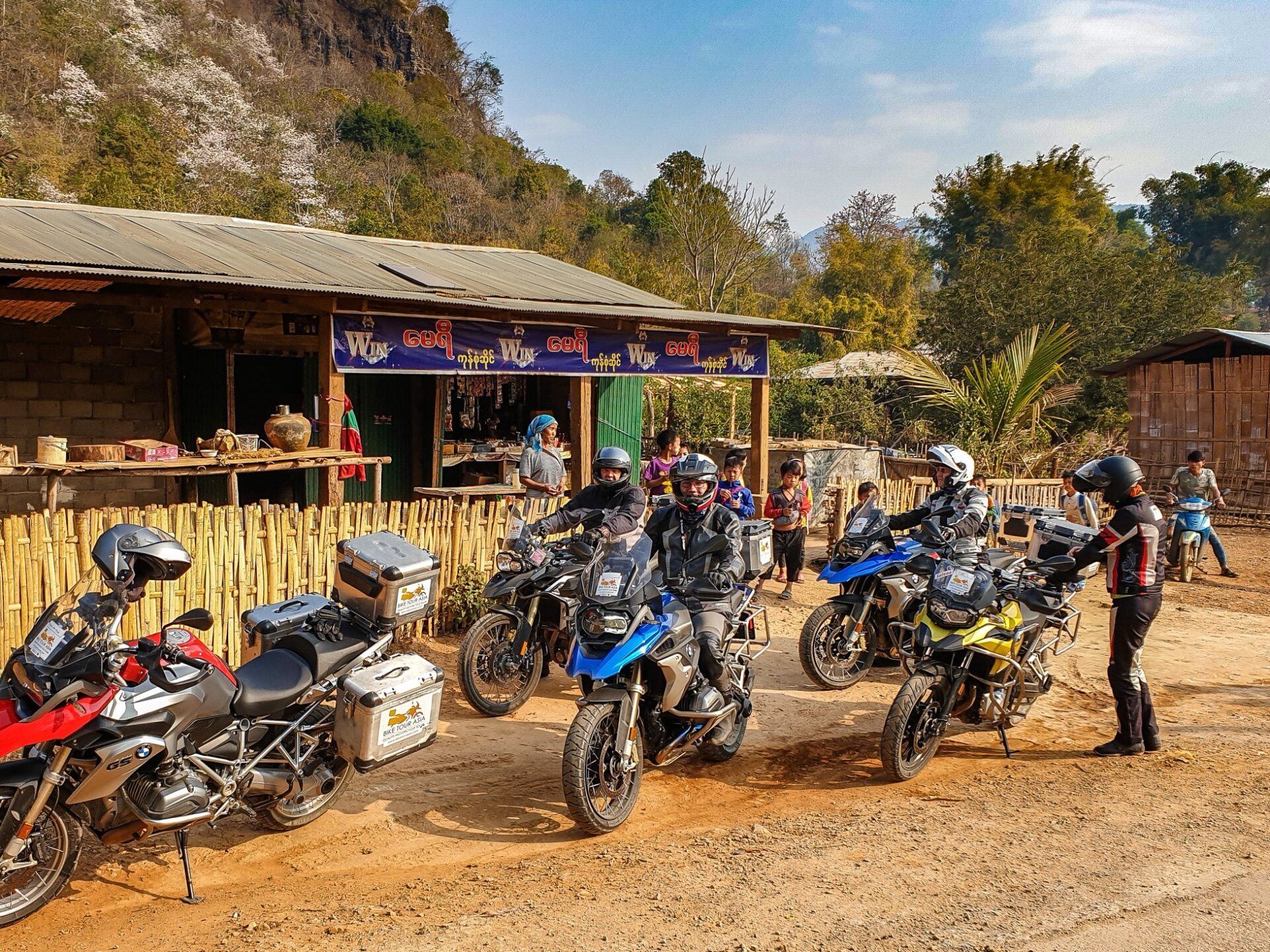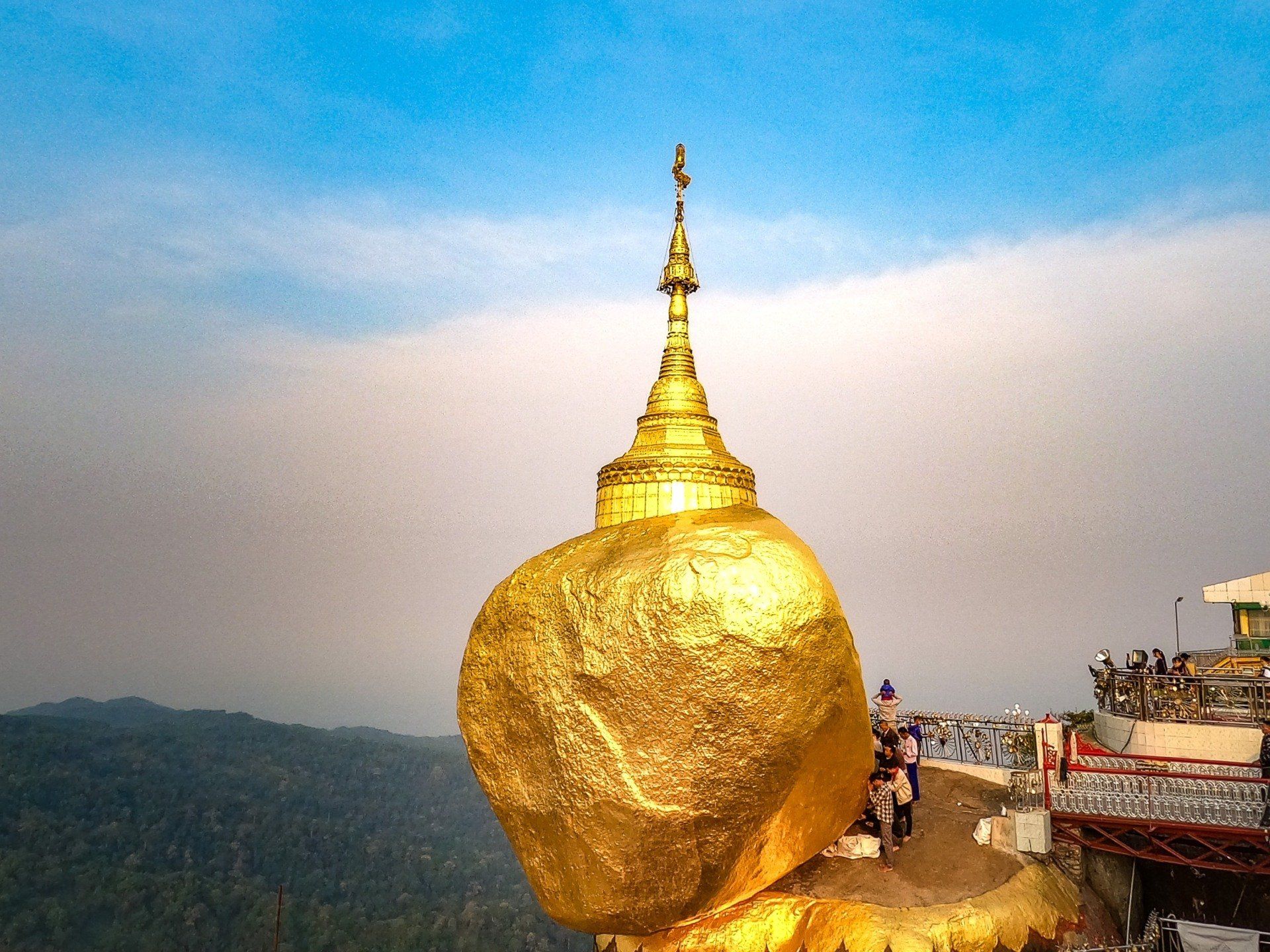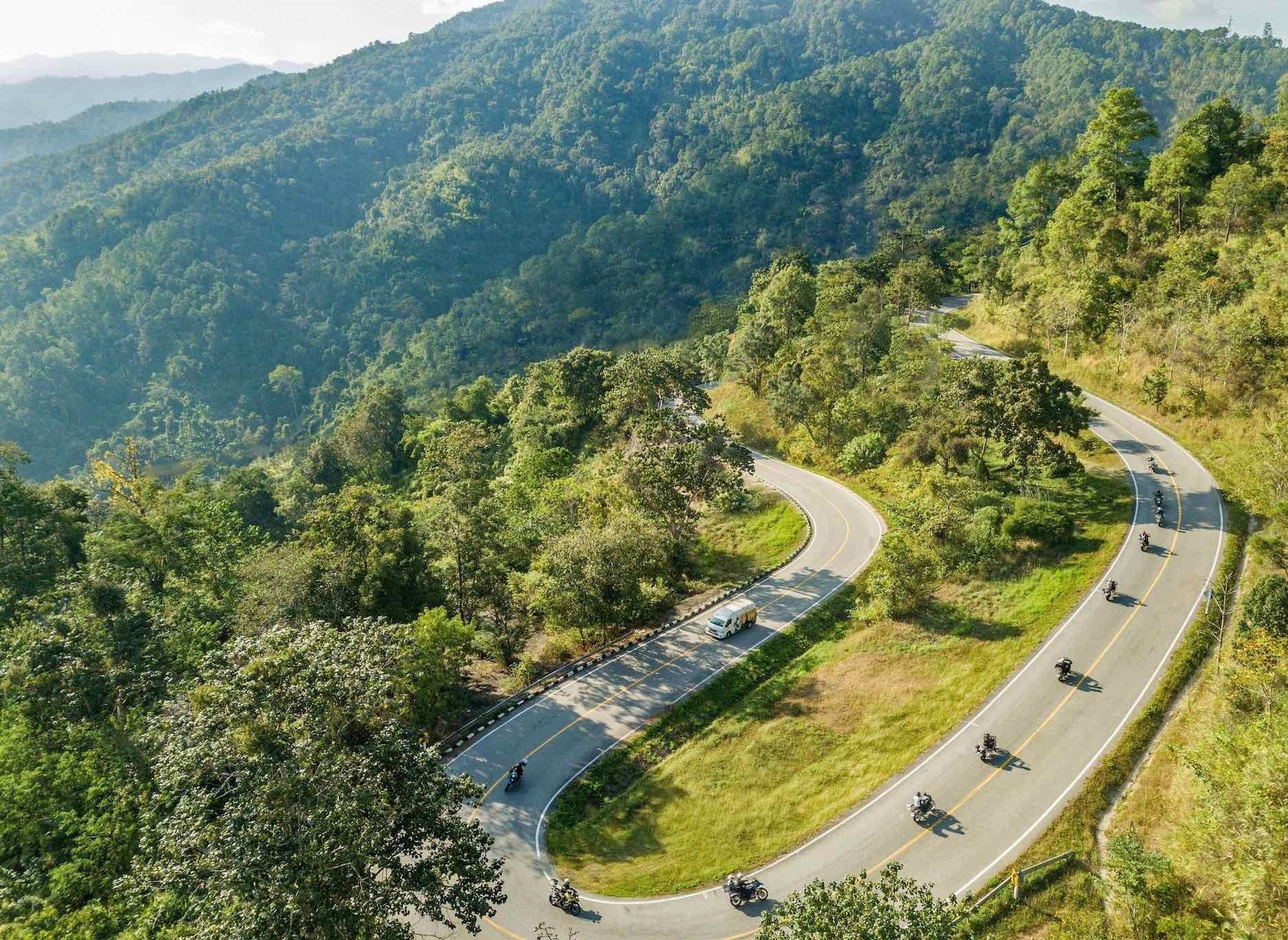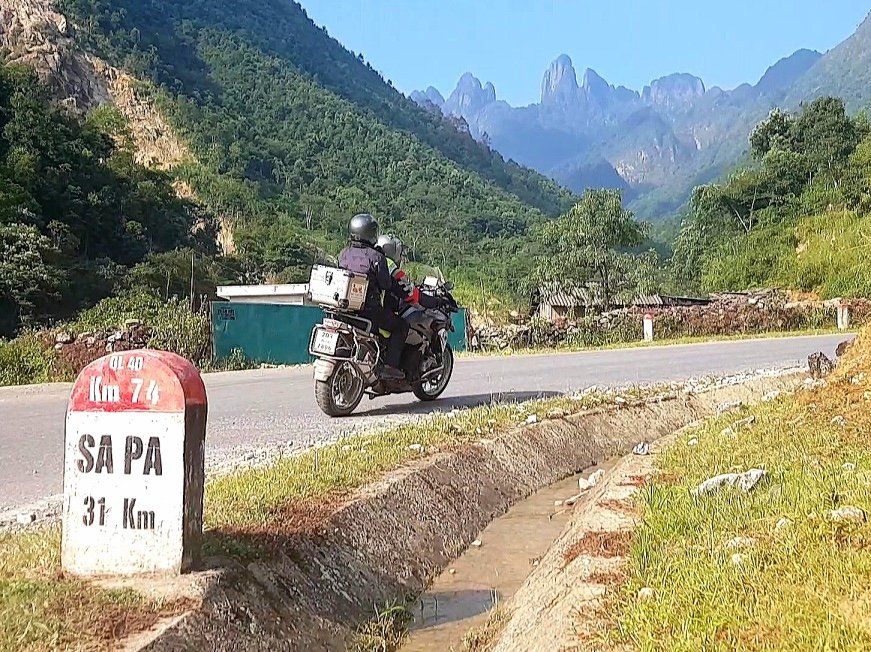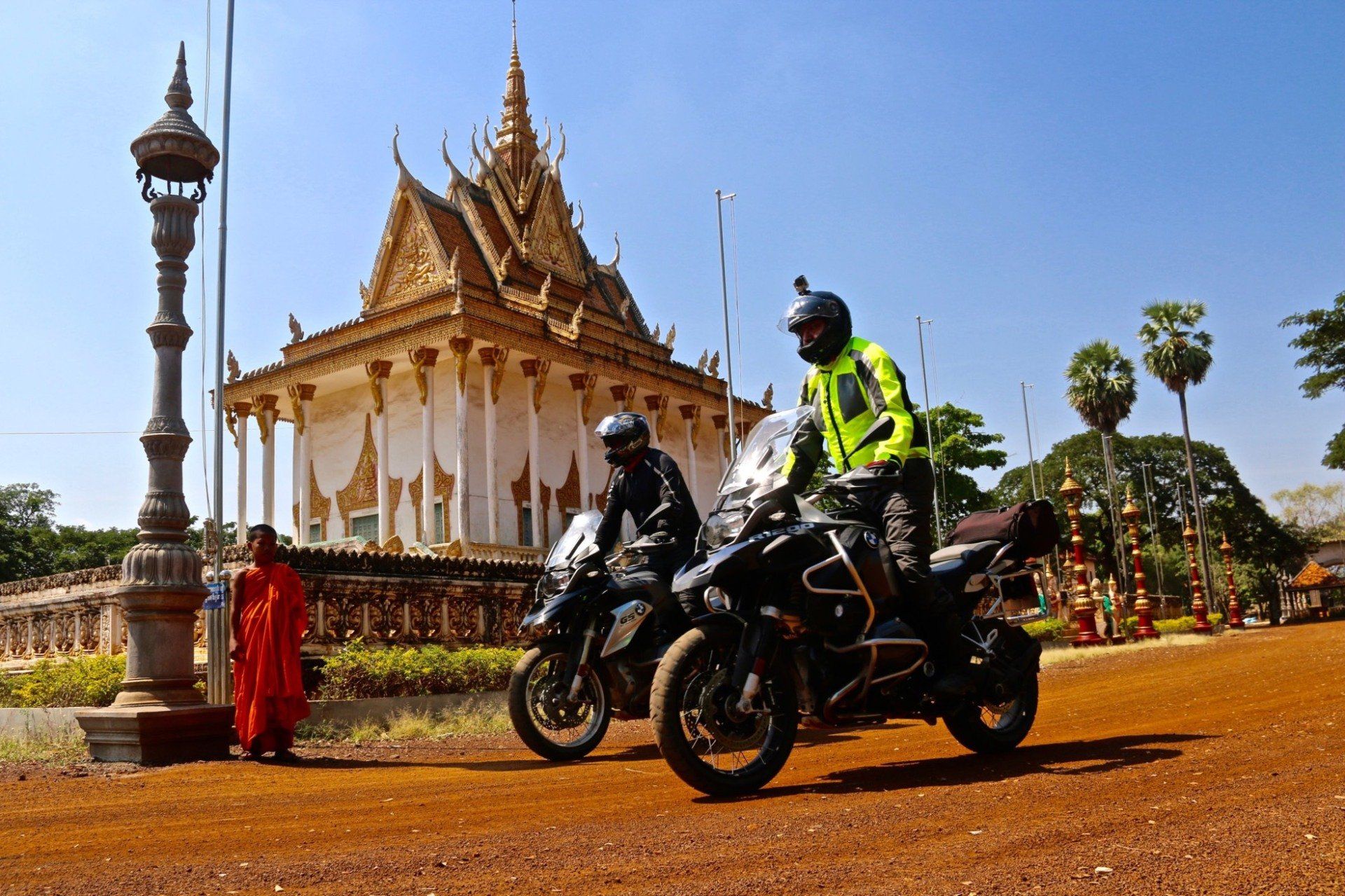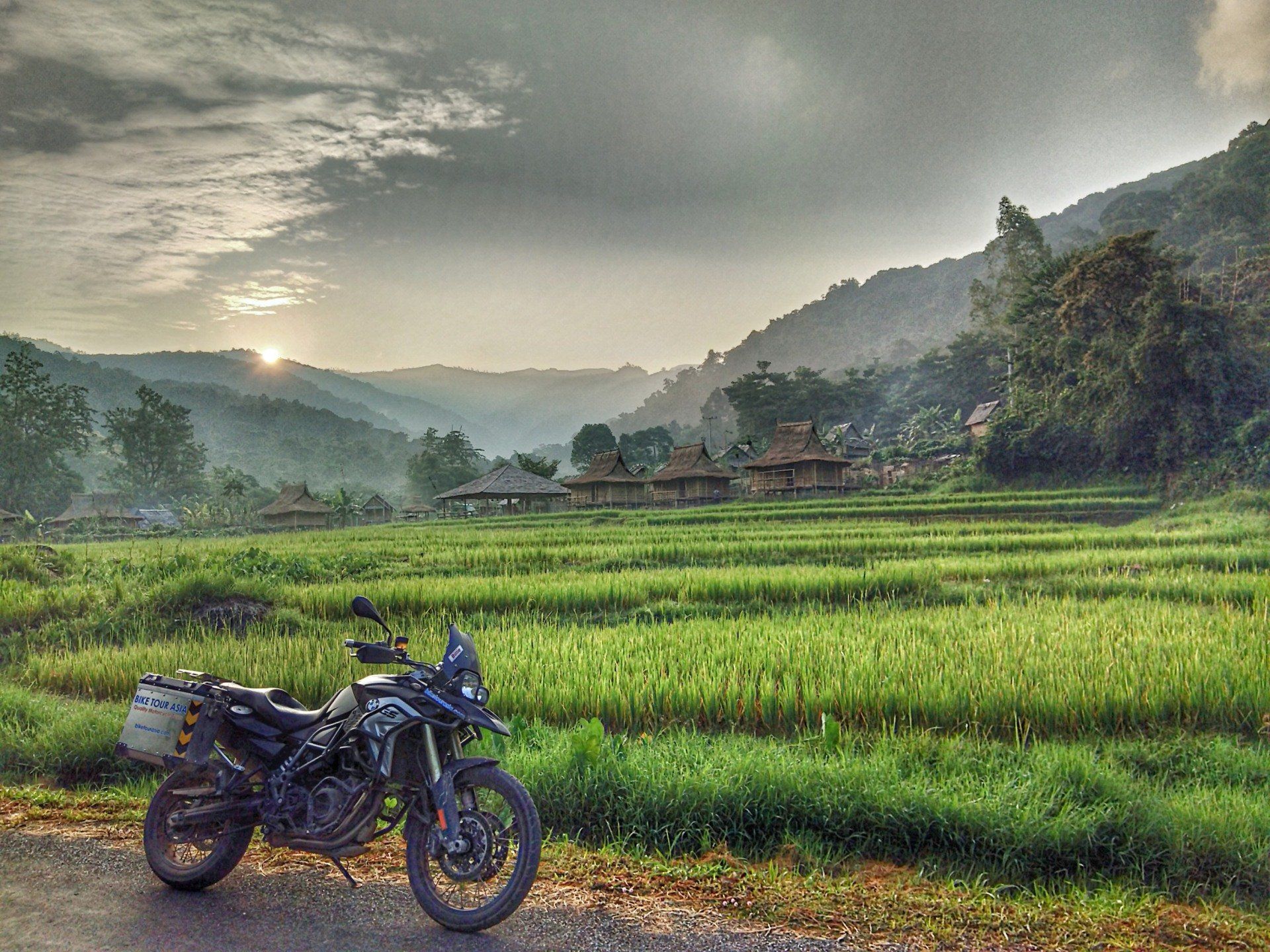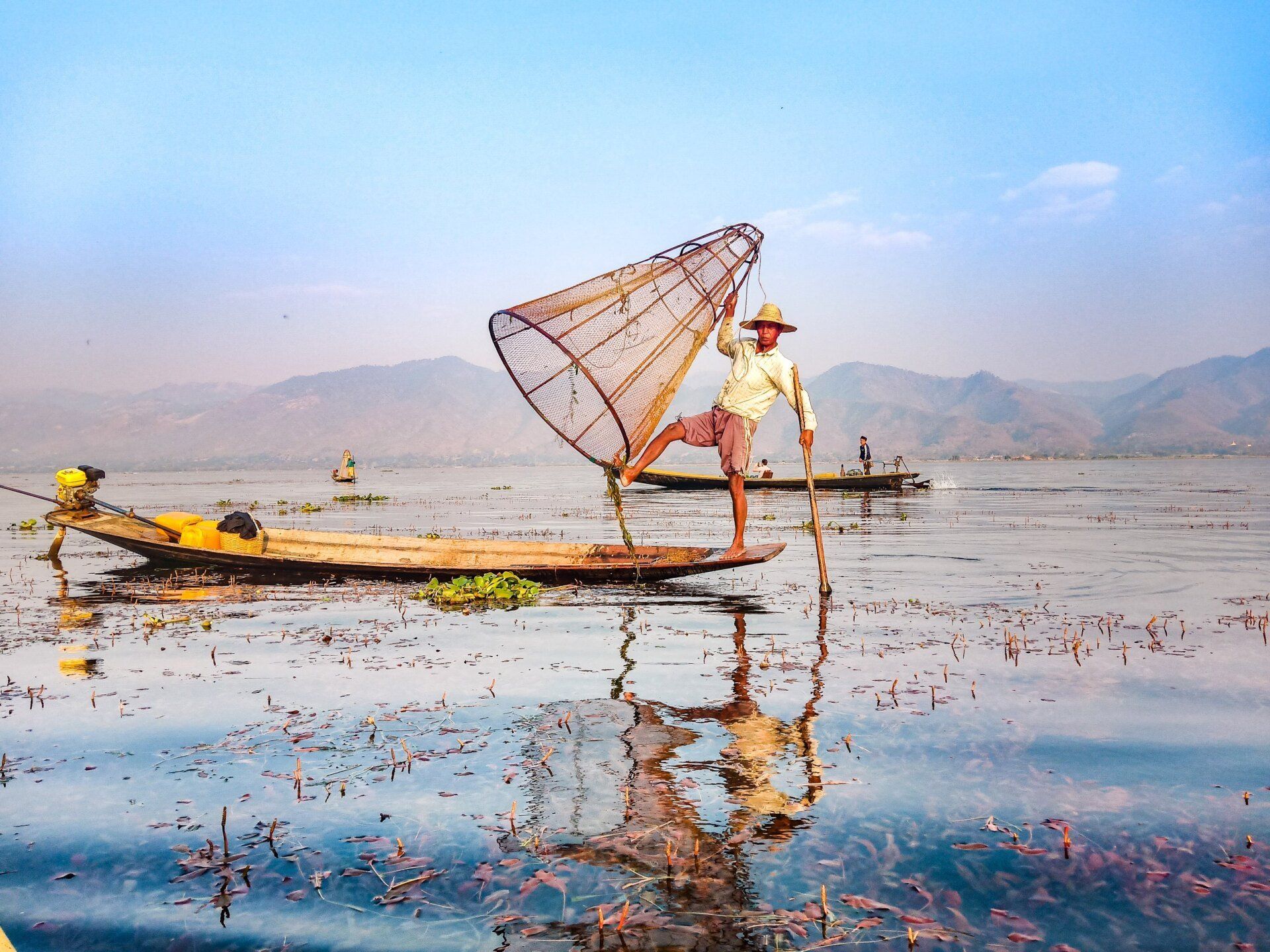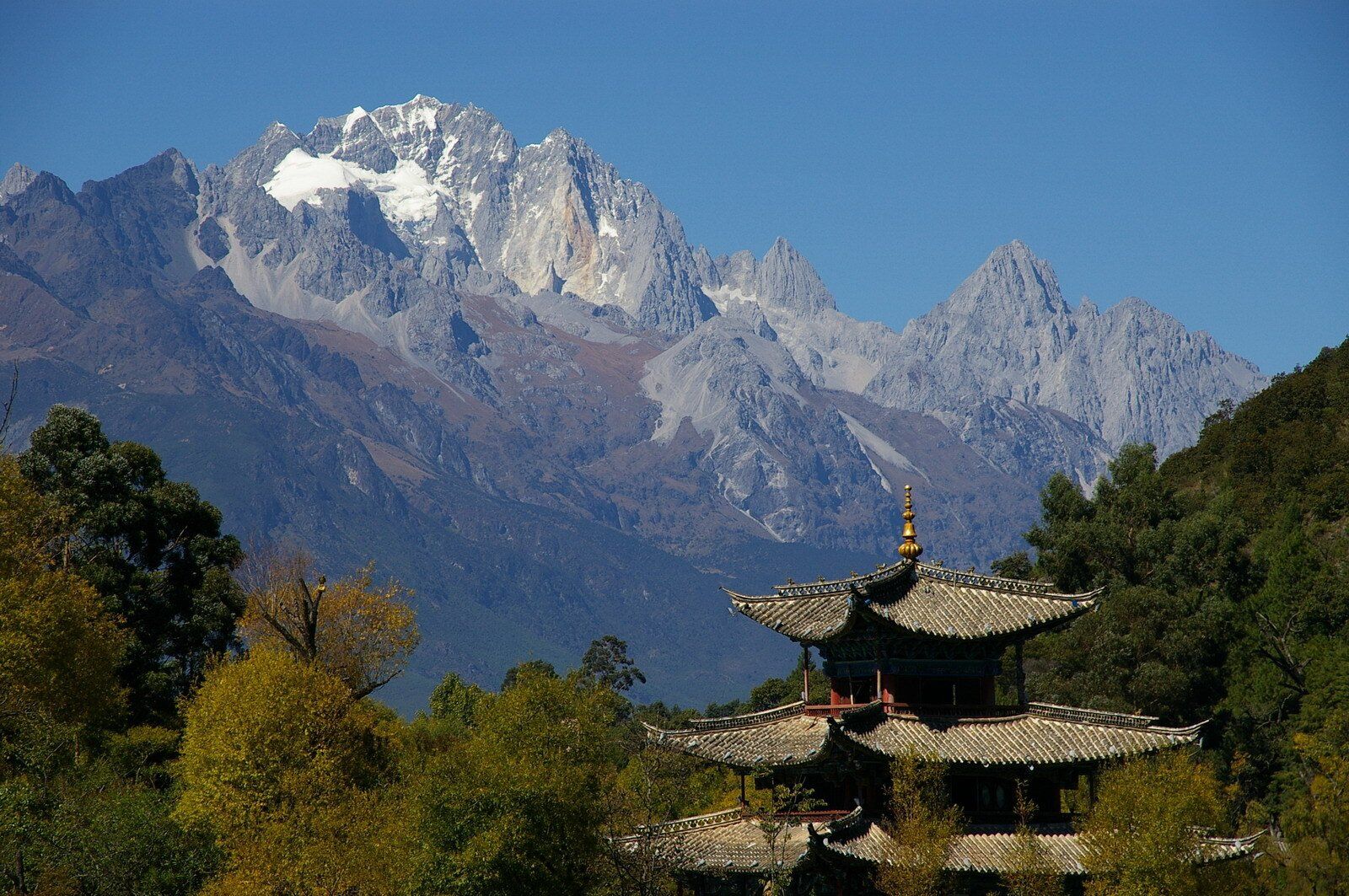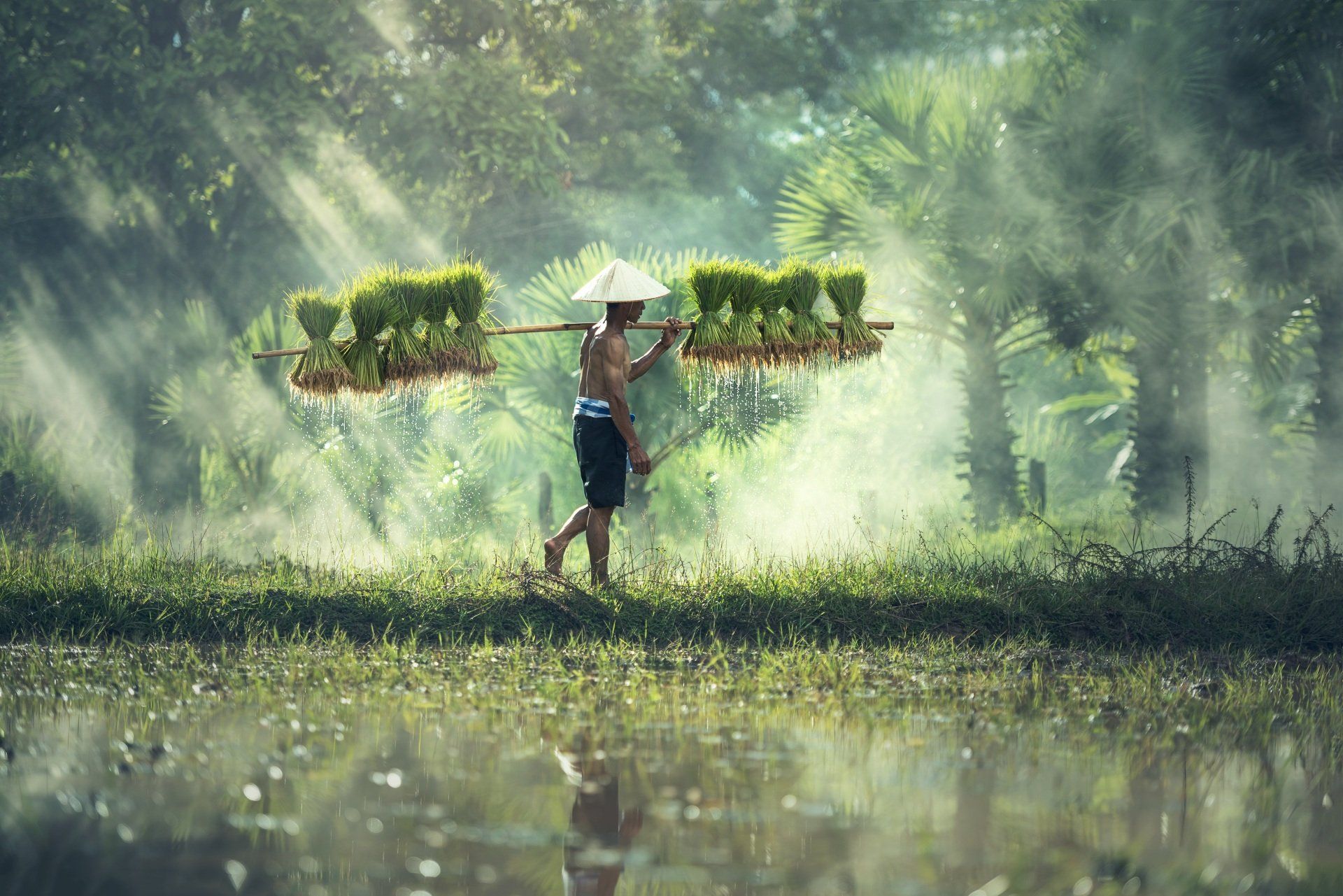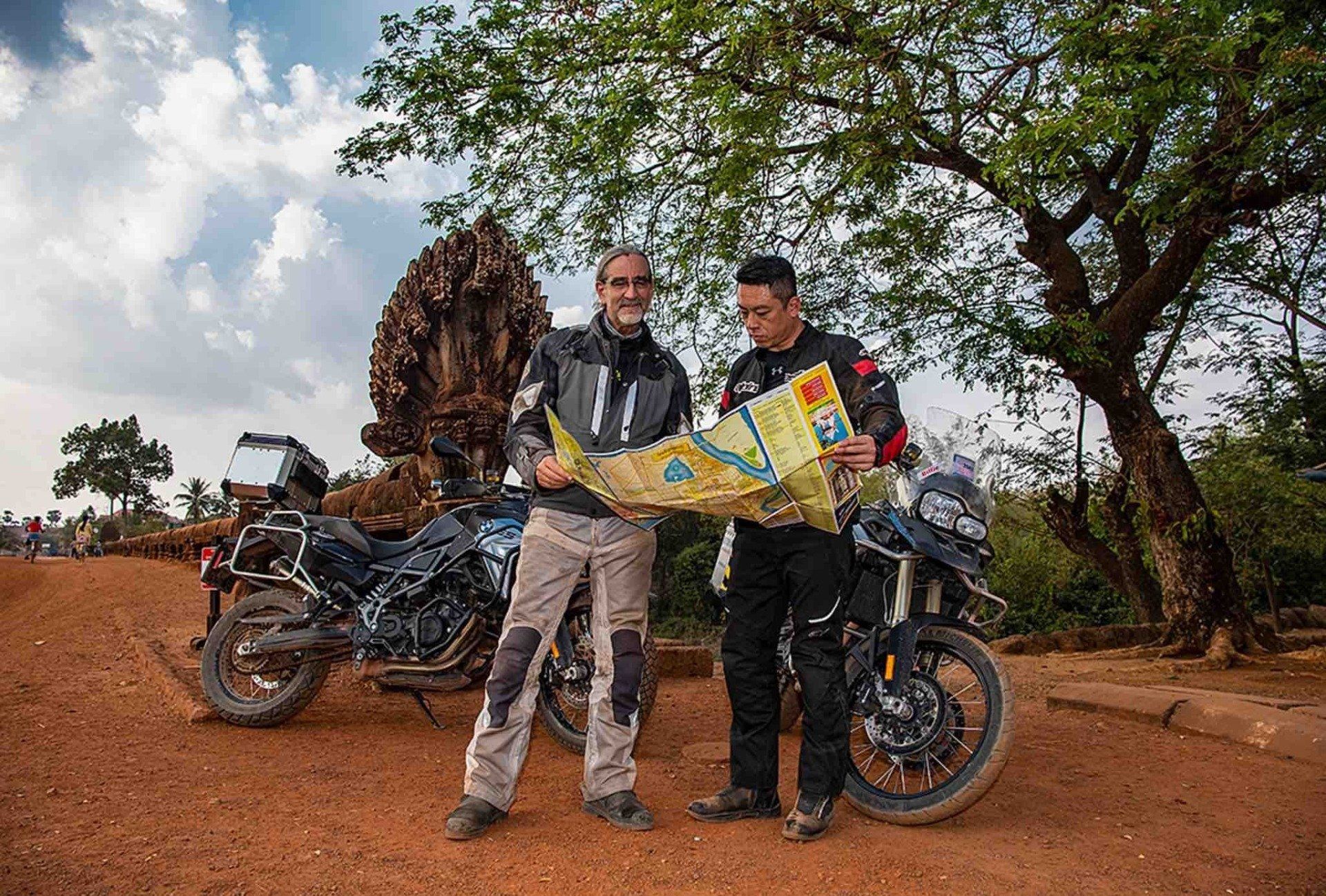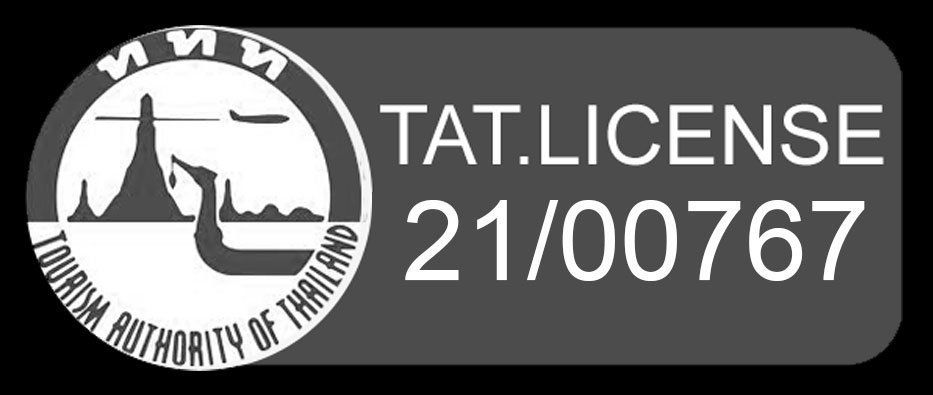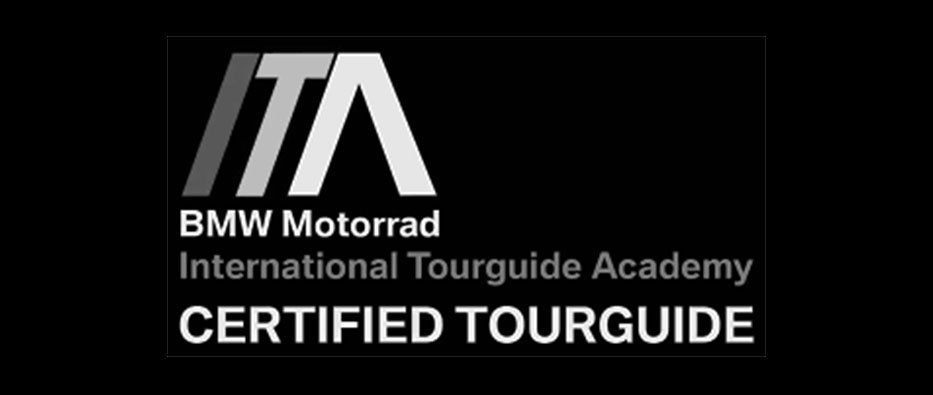By Jacob Mooney
•
July 28, 2022
This was my first time travelling to Myanmar. About a decade ago, I went to Mae Sai and crossed the border to Tachileik for a couple of hours, but that was just for sightseeing and shopping. This trip made me explore what Myanmar truly is and experience the beauty of its people and culture. We started in Chiang Mai. Some of our guests decided to spend some time in Thailand before the start of the tour and came a couple days earlier. They enjoyed sight-seeing in the city and some elephants. We all met up at Bike Tour Asia service center for the motorcycle handover. Everyone was eager for this trip. At the welcome dinner, we got to know each and celebrated Frank’s birthday. On the second day, we kicked off from the suburb hotel in Chiang Mai and headed to Chiang Rai. We used the back road Via Phrao District. The road was quite small but nice. You would enjoy riding up to the mountain and seeing the city down below. We stopped for lunch near Doi Chang, where one of the best coffees in the world is grown. We went up to see the plantation on Doi Chang. Next stop, we went to the White Temple. We took some pictures and explored inside the temple. There was a small, artificial waterfall at the back of the temple. The design was interesting; it was a combination between Thai (Theravada) and Chinese (Mahayana) Buddhism, with some western influence like Teenage Mutant Ninja Turtles and their master. We spent the night in the heart of Chiang Rai, having barbeque ribs for dinner. On the next day, we went to the golden triangle, where the border of Myanmar, Laos and Thailand meets, separated by the Ruek and Mekong rivers. Kung and I went ahead to the border in Mae Sai to prepare the border crossing process. It took around 1 hour before we crossed the border and met with Crystal, our Burmese associate. After getting our Visas stamped, we had lunch in Tachileik, the border city in Shan State. We met Tun, our local guide. He gave us a brief introduction to the Union of Myanmar; It consists of 8 different ethnic groups, with Bamar (Burmese) people being the majority populace, and is divided into 7 States (one for each ethnic group) and 7 Regions (for Barma people). We went to Keng Tong (or Kyaing Tung) to stay for a night. We had dinner at the local restaurant by the small lake. The fourth day of the trip, we kept going west to the city named Nam Sang. The road that day was challenging. There was only a single paved lane while on both sides of the road were gravel or dirt waiting for the pavement to be laid. We had to share the road with the trucks coming to Keng Tong. However, the view on the mountain was beautiful. We rode along the river and mountain in the morning and in the afternoon we passed more towns. We came across the Ngwe people. Their tradition was that married women would shave their heads and put on the turban-like cloth for the rest of their life. We stayed at Nam Sang, a city between Keng Tong and Taungyi. The weather was colder than Keng Tong. It was a tiring day, yet we were still happy and looking forward to the next day. The fifth day was short. We started at 8.30am and rode to Taungyi, the capital city of Shan State. Taungyi was beautiful. The city itself is on the mountain top. When we rode down from the city, we saw the other small cities below. We arrived at the hotel next to Inle Lake in the afternoon. We temporarily changed ourselves from “Bike Tour” to “Boat Tour” and took the boat to the restaurant on the lake and had lunch there. All the ingredients in our food was from the lake itself. We spent the rest of the afternoon on a boat trip to the village inside the lake. Boats are the only transportation for the village inside the lake. We saw the famous Lotus Thread Weaving, and the paper umbrellas made from hemp. On the way back we saw a renowned fishermen of Inle Lake, in which they did the multitasking of carrying a fish trap and rowing their boats with their feet at the same time. After the boat trip we had dinner at a winery, enjoying the food and local wine. On the sixth day, we left for Bagan, Mandalay Region. We stopped at Meitikla for lunch, and then passed by the air force base of Myanmar. We arrived at Bagan in the late afternoon. (Bagan, once an empire, was founded in the second century and became the capital city of Myanmar for around 200 years.) After taking resting for a bit, we went to see the sunset at the sunset hill – the artificial hill made especially for sunset viewing. It was a bit disappointing when it was too cloudy to see the sun set properly, but the next morning some of us got up early and went to see the sunrise at the same place. We found a nice Italian/Burmese restaurant for dinner and had a delicious meal. After breakfast the next morning, we split into 2 groups; one group went for a city tour while the other group stayed at the hotel and chilled out with the idyllic view of the Irrawaddy River. We didn’t ride and decided to do some maintenance on our bikes in preparation for the rest of the trip The eighth day, we rode to Naypyidaw, the current capital city of Myanmar. The road was easy to navigate and mostly flat. We stopped for lunch in Magway, the capital city of Magway Region. We arrived at the entrance to Naypyidaw in the afternoon, where the tourist police waited for us with an escort police car. The police brought us through the 20-lane boulevard to the Uppatasanti Pagoda, a replica of Shwedagon Pagoda in Yangon, and to the hotel. We spent the evening having dinner at a local restaurant. The next day was a bit challenging. We rode from Naypyidaw to Kyaikto, Mon State, sharing the road with trucks and other motorcycles. Since motorcycles are not allowed to use the Naypyidaw-Yangon express way, we had to use the other road instead. Riding was long and hot because we were on the plain and not the mountain anymore. There were a lot of trucks along the way since they could not use the express way either. We crossed the bridge over Sittaung River as it flowed towards the Gulf of Martaban. It was the first time since we arrived in Myanmar that we saw the sea. We stayed at the base of the trail to Kyaiktiyo Pagoda. On the tenth day of the trip, the last day in Myanmar, we got up early to get on a truck and went up to Kyaiktiyo, where the famous pagoda The Golden Rock was located. According to legend, the Golden Rock itself is precariously perched on a strand of the Buddha’s hair. The balancing rock seems to defy gravity, as it perpetually appears to be on the verge of rolling down the hill. We spent some time exploring the temple and taking some pictures with the golden rock, and then came back and prepared to take off. We rode straight to Myawaddy, Kayin State, the border city west of Mae Sot, border city of Thailand. The road was simple until after lunch, then there was a lot of road construction to expand the road to the border. Everything was dusty and red, but our riders conquered it. We arrived at the border in the late afternoon, just before the border closing time. We stayed at the hotel in Mae Sot, and went for a Thai food restaurant. By this time, we missed Thai food so much. It was the eleventh day of the trip. We went straight to Mae Hong Son, passing the refugee camp of Karen people who fled the conflict and persecution from the Burmese Government. The road that day was very nice, well paved, a bit curvy up and down the small hills and mountains. We stopped at Mae Sarieng for lunch before resuming the ride to Mae Hong Son. We enjoyed the swimming pool, Thai massage, and a lovely dinner at the hotel. The day had been a long stretch of riding but an easy and scenic one. On the morning of the next day we changed again from Bike Tour to Boat Tour temporarily and went to the Long Neck (Kayan) tribe village by boat. We spent the morning exploring and meeting with Kayan people. Then, we rode to Ban Rak Thai, one of the biggest Yunnanese villages in Thailand. We went to Myanmar again through a small border control to visit a school in the bordering village. After leaving the school, we came back and had Yunnanese food for lunch. Ban Rak Thai consist of Yunnanese descendants whose ancestors fled the conflict after the Kuomintang lost to Mao Zedong’s Communist Party of China in 1949. Since Myanmar shares its border with Yunnan Province, it was easy for the refugees to travel to Thailand through Myanmar. They’ve never left Thailand since then, and named the village “Ban Rak Thai” which means the village that loves Thailand. After lunch, we continued to Pai, the so-called capital of hippies in Thailand. We had dinner by the river Pai, and then explored the night market before going to bed. The thirteenth and last riding day, we went back to Chiang Mai through a back road to Galyani Vadhana, and Samoeng District. We had lunch at a local restaurant in Samoeng before going down to Hang Dong, Chiang Mai where our service center is located. After returning the bikes we went to stay in a hotel downtown with a different atmosphere and vibe from the first night in Chiang Mai. We had a farewell dinner with barbecued ribs and steak. As we enjoyed our meal, we shared our experiences on the tour, recalling the good times we had together before saying goodbye. We spent 2 weeks riding together for over 3,000 km, more than 6,000 curves and across 2 countries. Everyone was a good rider. Sometimes we came across unexpected situations, but we made it through together. When we looked back it was very fun and we laughed together every time someone brought it up. We experienced Myanmar culture. Myanmar people were very nice and kind. The food was good and plenty. The scenery was beautiful. That was more than enough for a good memory.
